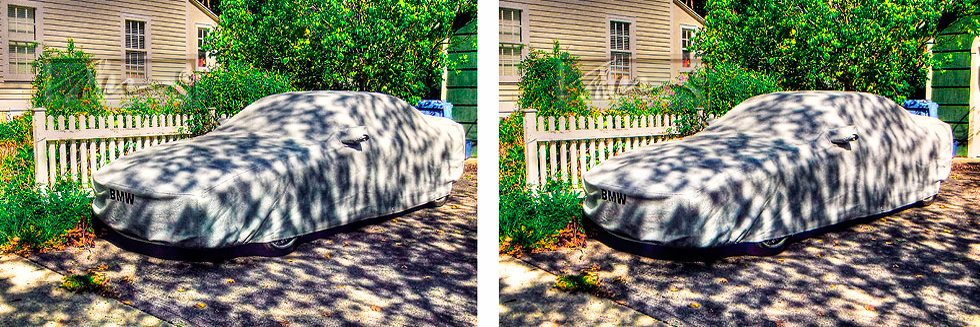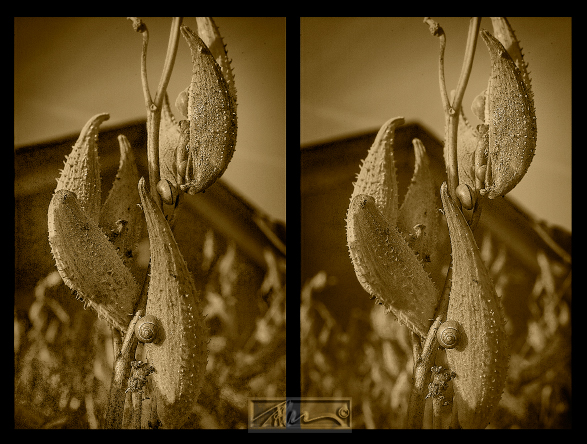It’s All About Depth.
The images shown are meant to be seen using the cross-view method.
Like any type of photography, there are subjects that work and subjects that do not. Much of photography relies on seeing the subject in the proper situation with the best light possible and finding the right composition. Even though we see in stereo, choosing good subjects for stereo imaging takes some thought and a slightly different approach than when choosing subjects for other types of photography. The use of stereo photography is all about viewing depth.
You should ask yourself if the subject is going to yield a strong 3 dimensional image. A picture of a wall shot straight on might seem as if the details are floating in front of you when you look at the final image, however that alone does not provide much in the way of 3 dimensional form.
I believe that the best stereo images are those that play with the structure of the subject. Think of your subject as a piece of sculpture. What you want to do is produce an image that takes advantage of the subject’s form and shape.
If possible, walk around the subject looking for interesting shapes and depth cues. Look for opportunities that you might not see from a single angle of view. Look at the details and shoot the subject from an angle that produces a dramatic effect that optimizes the 3 dimensional characteristics of the subject. For instance, if your subject is a statue, look for details that are specific to the statue. It might be that the figure is holding a drawn bow. If so, it might be interesting to photograph the subject from the vantage point of looking down the shaft of an arrow so that the arrow will look as if it is pointed directly at the viewer. This will maximize the stereo effect and should produce a great looking stereo image. There are a number of cues that the brain uses to decipher a stereo image. Besides the slight difference in perspective, depth of field and other factors can enhance the experience of 3D..
Using the example of the arrow, a shallow depth-of-field with the focus at the arrowhead would place the emphasis on that feature. Contrast can also play a similar role. I find that stereo effects are stronger when a more saturated color as well as a higher than normal degree of sharpness are applied.
Remember, you are photographing something that is dimensional and everything in the view will also be dimensional. Paying attention to the details especially in the background as well as the foreground is very important.
I would say that nearly any three-dimensional subject has potential to make a good stereo image. Along with all the compositional components that make a great image, you should try to take advantage of its 3 dimensionality and compose accordingly.
In spite of what I just said, the concept of the image is also important. Your choice for using stereo should not overpower what you are attempting to say in your image. If not used carefully, stereo can become a distraction from any intended photographic meaning.
I write about stereo imaging among other photographic topics in my book Rethinking Digital Photography.
Please have a look at some of my other posts here.
NOTICE of Copyright: THIS POSTING AS WELL AS ALL PHOTOGRAPHS, GALLERY IMAGES, AND ILLUSTRATIONS ARE COPYRIGHT © JOHN NEEL AND ARE NOT TO BE USED FOR ANY PURPOSE WITHOUT WRITTEN CONSENT FROM THE WRITER, THE PHOTOGRAPHER AND/OR lensgarden.com. THE IDEAS EXPRESSED ARE THE PROPERTY OF THE PHOTOGRAPHER AND THE AUTHOR.



